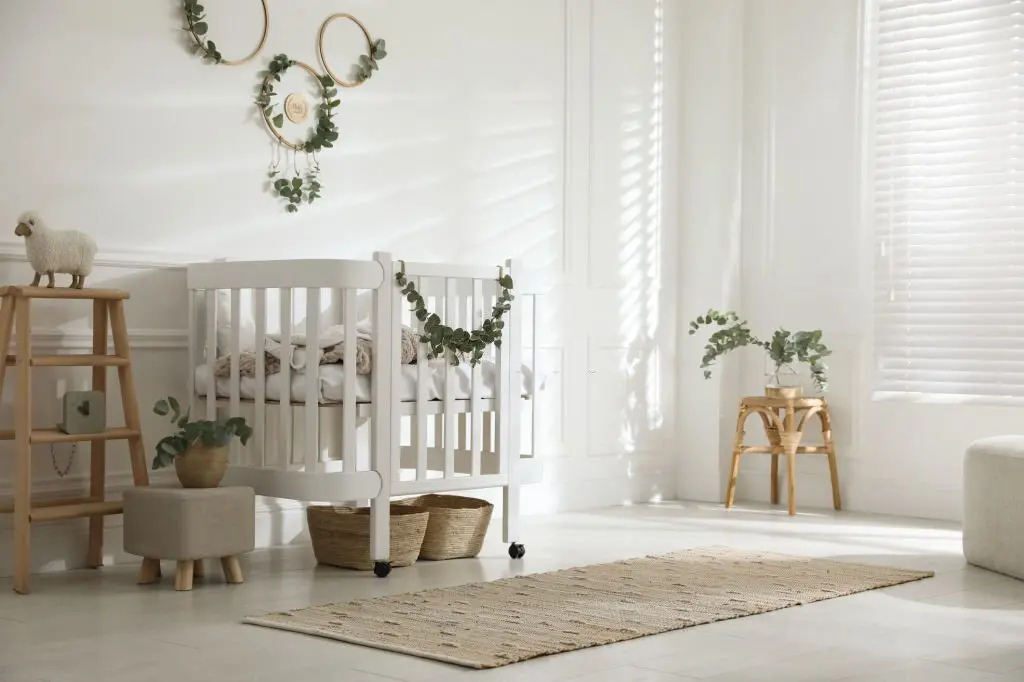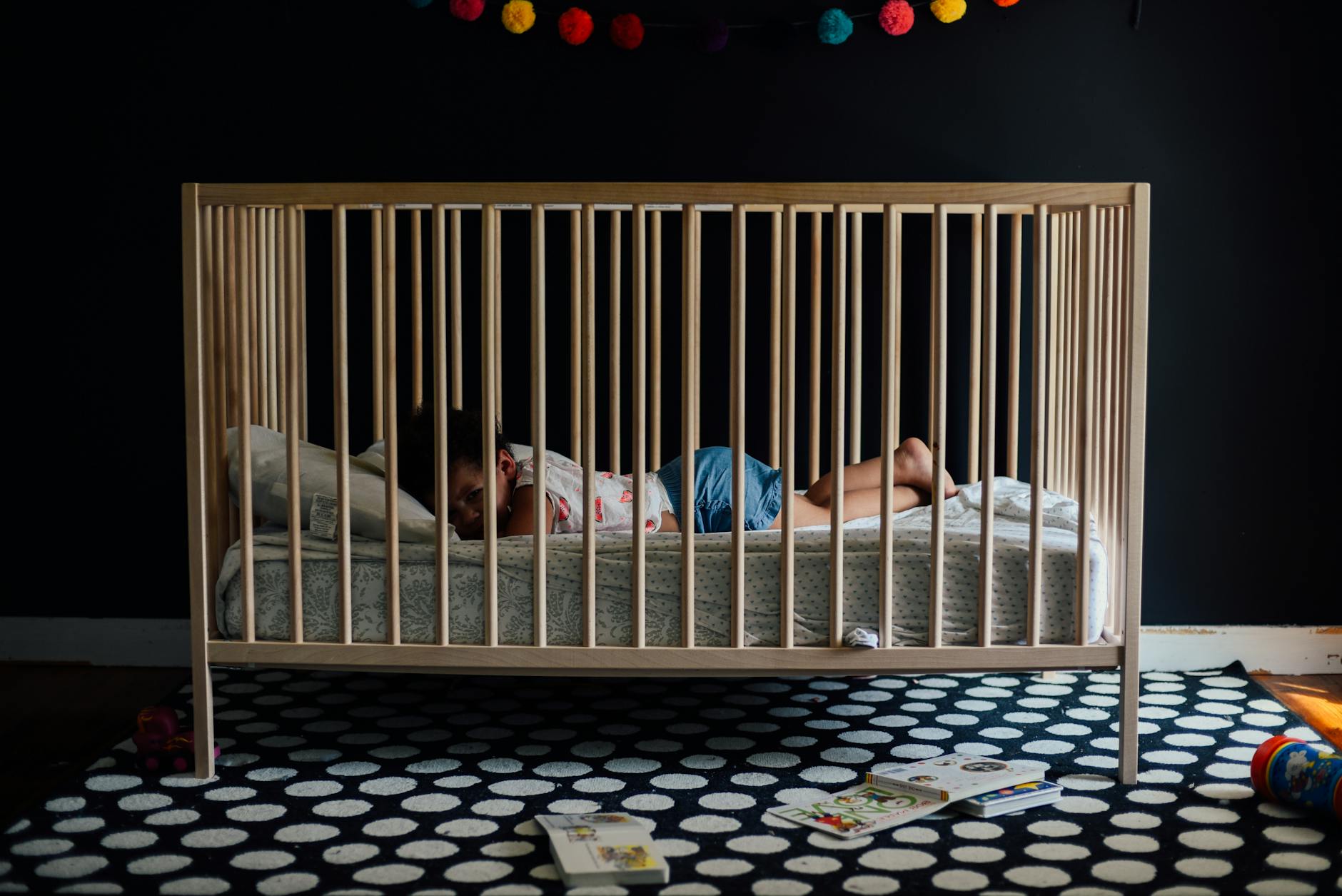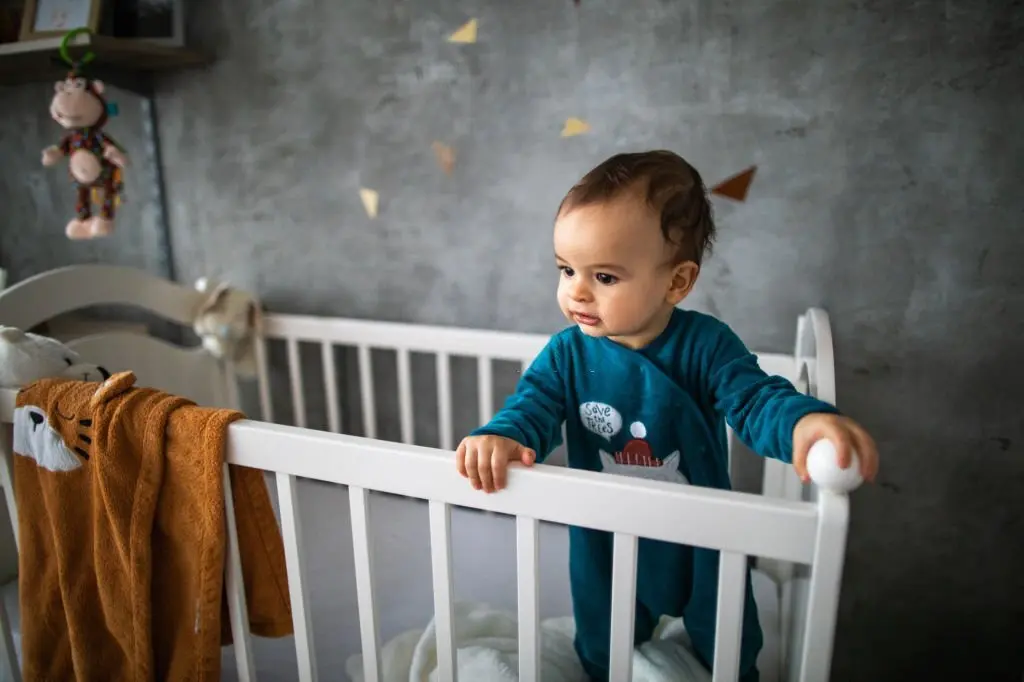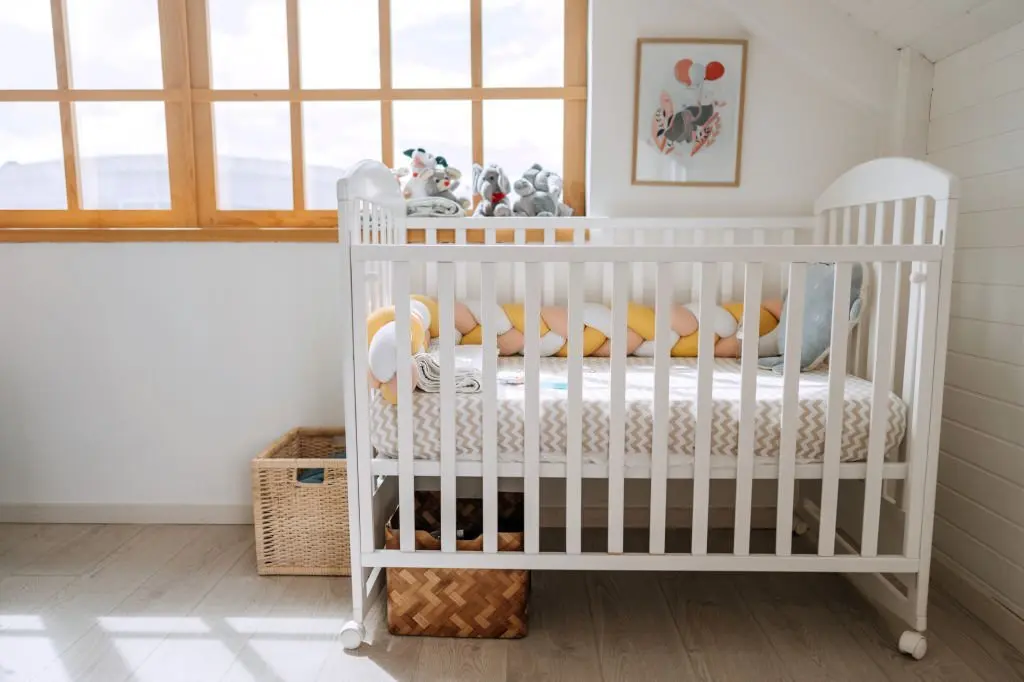How to Make Baby More Comfortable in Crib

Introduction to how to make baby more comfortable in crib
When transitioning your baby to sleeping in a crib, it’s essential to ensure both comfort and safety to foster an environment conducive to sleep. The process can feel daunting, especially as new parents attempt to understand how to make their baby’s crib both comfortable and secure.
This comprehensive guide explores various aspects of a baby crib, safety precautions, and methods to enhance comfort, all aimed at ensuring your little one has a peaceful night’s rest.
Why are baby cribs so uncomfortable?
 How to make baby more comfortable in crib
How to make baby more comfortable in crib
To an adult, the firmness of a baby crib mattress may seem uncomfortable. However, a firmer surface is recommended for infants to prevent the risk of sudden Infant Death Syndrome.
It may take some time for your baby to adjust to the mattress’s hardness, which could initially make the crib seem uncomfortable.
What makes a crib safe?

Safety is paramount when considering baby crib options. The crib should be sturdy, with slats no more than 2 3/8 inches apart to prevent your baby’s head from getting trapped.
It should have a firm mattress fitting snugly within the crib frame, with no gaps. Avoid drop-side cribs as they’ve been banned in the US due to safety issues. Also, keep the crib free from any toys, pillows, or blankets that could pose suffocation risks.
What makes a crib mattress safe?

A safe crib mattress should be firm, to prevent the risk of SIDS, as mentioned earlier. It should fit tightly within the crib, leaving no space for the baby to slip into it.
The mattress cover should be waterproof to keep the interior dry, thereby preventing mold and bacteria growth. Lastly, a crib mattress should meet all the safety standards outlined by the Consumer Product Safety Commission.
What can I safely put in my baby’s crib?
While a barren crib may seem stark, safety always trumps aesthetics when it comes to your baby’s sleep environment. However, a few select items can be safely introduced to the crib:
Stuffed toys: While they may seem comforting, avoid placing stuffed toys in the crib until your baby is older than 12 months. These can pose suffocation risks for younger babies.
Crib bumpers: Despite being marketed widely, crib bumpers are considered unsafe due to suffocation hazards. It’s best to keep them out of the crib.
Baby won’t sleep on a firm mattress
A firm mattress, while crucial for safety, may seem unfamiliar to your baby. Remember, their comfort perception differs from adults. Introduce the new mattress gradually during nap times to help them adjust.
Baby hates lying flat on her back
It’s normal for some babies to resist sleeping flat on their backs due to conditions like reflux. However, ‘back is best’ for safe infant sleep. If your baby has a hard time, consider talking to a pediatrician for guidance.
How to make baby’s crib more comfortable

Creating a welcoming environment in the crib can help encourage your baby to sleep peacefully.
Swaddling or using sleep sacks
Swaddling provides a comforting, womb-like environment for newborns. As they grow, transition to sleep sacks for safety.
Encouraging the use of a pacifier
Pacifiers can provide a soothing effect for babies and have been associated with a decreased risk of SIDS.
Baby music or white noise
Gentle lullabies or white noise can mimic the comforting sounds in the womb, helping the baby sleep better.
Crib Mobile
A simple, safe crib mobile can provide visual stimulation and soothe a restless baby.
Maintain Proper temperature
Ensure the room temperature is comfortable – around 68 to 72 degrees Fahrenheit is ideal.
Use sleep sacks or swaddle wrap
As previously mentioned, these can provide a secure and cozy environment for your baby.
White noise or soothing music
Again, these sounds can serve as a great comfort to babies.
Maintain appropriate room temperature
Avoid overheating or chilling, which can cause discomfort and disturb your baby’s sleep.
Make Sure the crib is clean and clutter-free.
Regular cleaning will prevent the accumulation of dust or allergens that might irritate your baby. Keeping the crib clutter-free also reduces suffocation hazards.
Things you should consider in making a crib safe
Apart from the crib’s structure, mattress, and positioning, consider the crib’s location.
It should be placed away from windows, blinds, or draperies to avoid potential strangulation hazards. Also, ensure there are no small objects within your baby’s reach that they might choke on.
Things you should consider in making a crib mattress safe
Ensure the crib mattress meets all safety standards and has a waterproof cover. Regularly check for signs of wear and tear, as a damaged mattress can be a hazard.
Why does your baby refuse to sleep on a firm mattress?
Babies might initially resist a firm mattress because they are accustomed to softer surfaces. However, persistence and routine can help them adapt to this safer sleeping arrangement.
Conclusion on how to make baby more comfortable in crib
Making your baby’s crib comfortable while ensuring safety can seem challenging.
However, with careful attention to crib structure, mattress selection, and creating a soothing environment, you can ease your baby’s transition to the crib.
Remember, every baby is unique, and what works for one might not work for another. Patience, trial, and adjustment are key.
Also Read:
- How to Prevent Baby From Hitting Head on Crib
- How do You Turn a Closet into a Nursery
- Mastering Comfort: The Definitive Guide How To Make Baby More Comfortable In Crib
- How To Convert Baby Cache Crib To Toddler Bed: A Comprehensive Guide
- When To Move Baby To Crib : A Comprehensive Guide
- How To Keep Baby From Rolling Over In The Crib: An Ultimate Guide
- How to Get a Baby to Sleep in Crib: Your Ultimate Guide
- How to Get Baby To Sleep In Crib: Tips and Tricks.
FAQs on how to make baby more comfortable in crib
Why my baby suddenly hates the crib
Babies might suddenly resist their cribs due to milestones like teething or separation anxiety. Maintain a consistent routine, and offer comfort without removing them from the crib.
What makes the transition to the crib difficult?
The crib can feel vast and unfamiliar compared to the womb or a bassinet. Additionally, the crib mattress’s firmness can seem uncomfortable at first.
When is the best time to make the transition to the crib?
While the timing varies for every baby, the transition is usually smoother between 3 and 6 months of age.
What is the easiest way to get my baby to sleep in his crib?
Consistency and routine are vital. Start with naps and gradually move to nighttime sleep. Create a soothing environment with lullabies, white noise, and a comforting pre-sleep ritual.
What are your tips for making the transition to the crib as easy as possible?
Patience, persistence, and creating a comfortable, safe crib environment are key. Also, a consistent bedtime routine can help signal to your baby that it’s time to sleep.
Why is my baby so restless in his crib?
Restlessness can be due to various reasons, including illness, teething, or even milestones like learning to roll over. If your baby is consistently restless, it’s best to consult with a pediatrician.
What to do when your baby won’t sleep in their crib?
If your baby refuses the crib, consider seeking advice from a pediatrician or a certified sleep consultant.
They can provide guidance tailored to your baby’s unique needs. Remember, consistency is key; keep trying, and remember to ensure the crib is a safe, comforting space.
My baby seems to prefer sleeping in my arms. How can I make the crib feel more comforting?
Consider introducing a pacifier or a sleep sack, as both can offer comfort. White noise or soft lullabies may also mimic the soothing environment of your arms.
However, remember to transition your baby to the crib when they’re drowsy but still awake, so they learn to associate the crib with falling asleep.
My baby wakes up as soon as I put her down in the crib. What can I do?
It can be helpful to create a ‘wind-down’ routine before placing your baby in the crib, so they’re drowsy but awake.
This could involve a warm bath, gentle rocking, or a lullaby. When transferring your baby to the crib, maintain physical contact for a few moments before you remove your arms to minimize disruption.
My baby seems too big for the bassinet but too small for the crib. What should I do?
Safety is paramount. If your baby has outgrown the bassinet, it’s time to transition to the crib, even if it seems large.
You can create a cozier environment by swaddling your baby or using a sleep sack. Over time, your baby will get used to the extra space.
How can I ensure my baby doesn’t feel cold in the crib?
Maintaining an appropriate room temperature is essential. Use a baby-friendly room thermometer to ensure the temperature is between 68 and 72 degrees Fahrenheit.
Avoid blankets, as they can pose a suffocation risk. Instead, consider dressing your baby in layers or using a sleep sack to keep them warm.
What should I do if my baby continually cries in the crib?
Initially, your baby might protest the transition to the crib. If possible, comfort your baby without taking them out of the crib.
However, if the crying continues, it’s important to check if your baby needs a diaper change, feeding, or is feeling unwell. Always respond to your baby’s cries it helps them feel secure.
Remember, if you have persistent concerns, it’s always best to seek advice from a pediatrician or a certified sleep consultant. Each baby is unique, and they may be able to provide more personalized guidance.
